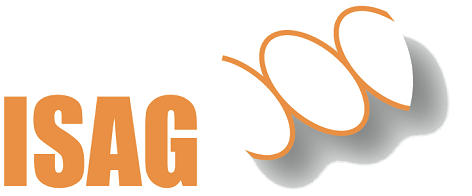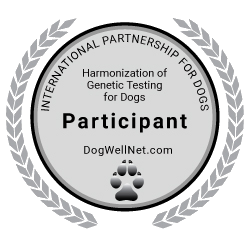Neuroaxonal dystrophy (NAD)
Neuroaxonal Dystrophy (NAD) is a heterogenous neurodegenerative disease. In dogs, several genetic...más
Disease
Neuroaxonal Dystrophy (NAD) is a heterogenous neurodegenerative disease that has been described in various mammalian species. Besides to the inherited form of the disease (primary NAD), NAD can also emerge in response to trauma, infection or toxin exposure (secondary NAD). Several genetic variants have been identified as the underlying cause of NAD in different species. The phenotype of NAD affected patients varies depending on the age of onset, the clinical manifestations and the specific disorder. However, severe axonal swelling (known as spheroids) in the central and/or peripheral nervous system, distal axonal atrophy and secondary myelin degradation are characteristic symptoms of NAD.
In the breed Papillon, a genetic variant of the PLA2G6 gene has been associated with NAD. Affected puppies show intention tremor and hypermetria at very young age (3-4 months). Gait abnormalities, incoordination, limb weakness, astasia (inability to stand), strabismus (crossed eyes) and eating difficulties are also usual signs of the disease. Symptoms gradually progress to cerebellar ataxia, tetraplegia, blindness and deafness.
In the breed Rottweiler, a genetic variant of the VSP11 (Vacuolar Protein Sorting 11) gene has been found to cause NAD. As in the breed Papillon, affected Rottweilers show postural deficits, ataxia, hypermetria, intention tremor and nystagmus. In the breed Rottweiler, the symptoms of NAD typically emerge at a young adult age with a mild progression of the disease.
In the breeds Spanish Waterdog and Lagotto Romagnolo, a genetic variant of the TECPR2 gene has been identified to correlate with NAD. NAD affected dogs of these breeds show the same symptoms as affected Papillons and Rottweilers. Additionally, behavioral changes (dullness, nervousness, vocalization) and incontinence, partially in combination with uncontrolled defecation, have been observed. First symptoms can be recognized at a juvenile age (6-11 months) with slowly progressing neurological signs.
A genetic variant in the RNF170 gene that causes NAD has been identified in the Miniature American Shepherd breed. The first clinical signs appear at around two years of age. Affected dogs develop a slowly progressive weakness and coordination problems of the hind limbs up to bilateral incomplete paralysis. Slowly progressive signs of myelopathy in the thoracic and lumbar spine can be observed. The cervical spine, cerebellum or forebrain may also be affected. No pain or balance problems are observed in affected dogs. The abnormalities in the gait pattern appear more pronounced when walking than when walking faster. The progressive symptoms lead to a reduced quality of life, the lifespan of affected dogs is not markedly reduced per se.
In the breed Papillon, a genetic variant of the PLA2G6 gene has been associated with NAD. Affected puppies show intention tremor and hypermetria at very young age (3-4 months). Gait abnormalities, incoordination, limb weakness, astasia (inability to stand), strabismus (crossed eyes) and eating difficulties are also usual signs of the disease. Symptoms gradually progress to cerebellar ataxia, tetraplegia, blindness and deafness.
In the breed Rottweiler, a genetic variant of the VSP11 (Vacuolar Protein Sorting 11) gene has been found to cause NAD. As in the breed Papillon, affected Rottweilers show postural deficits, ataxia, hypermetria, intention tremor and nystagmus. In the breed Rottweiler, the symptoms of NAD typically emerge at a young adult age with a mild progression of the disease.
In the breeds Spanish Waterdog and Lagotto Romagnolo, a genetic variant of the TECPR2 gene has been identified to correlate with NAD. NAD affected dogs of these breeds show the same symptoms as affected Papillons and Rottweilers. Additionally, behavioral changes (dullness, nervousness, vocalization) and incontinence, partially in combination with uncontrolled defecation, have been observed. First symptoms can be recognized at a juvenile age (6-11 months) with slowly progressing neurological signs.
A genetic variant in the RNF170 gene that causes NAD has been identified in the Miniature American Shepherd breed. The first clinical signs appear at around two years of age. Affected dogs develop a slowly progressive weakness and coordination problems of the hind limbs up to bilateral incomplete paralysis. Slowly progressive signs of myelopathy in the thoracic and lumbar spine can be observed. The cervical spine, cerebellum or forebrain may also be affected. No pain or balance problems are observed in affected dogs. The abnormalities in the gait pattern appear more pronounced when walking than when walking faster. The progressive symptoms lead to a reduced quality of life, the lifespan of affected dogs is not markedly reduced per se.
Breed
Lagotto Romagnolo,
Miniature American Shepherd,
Papillon,
Rottweiler,
Spanish Water Dog
Heredity
autosomal recessive
Test duration
3-5 days after arrival of the sample in the lab (in case of sequencing 1-2 weeks)


